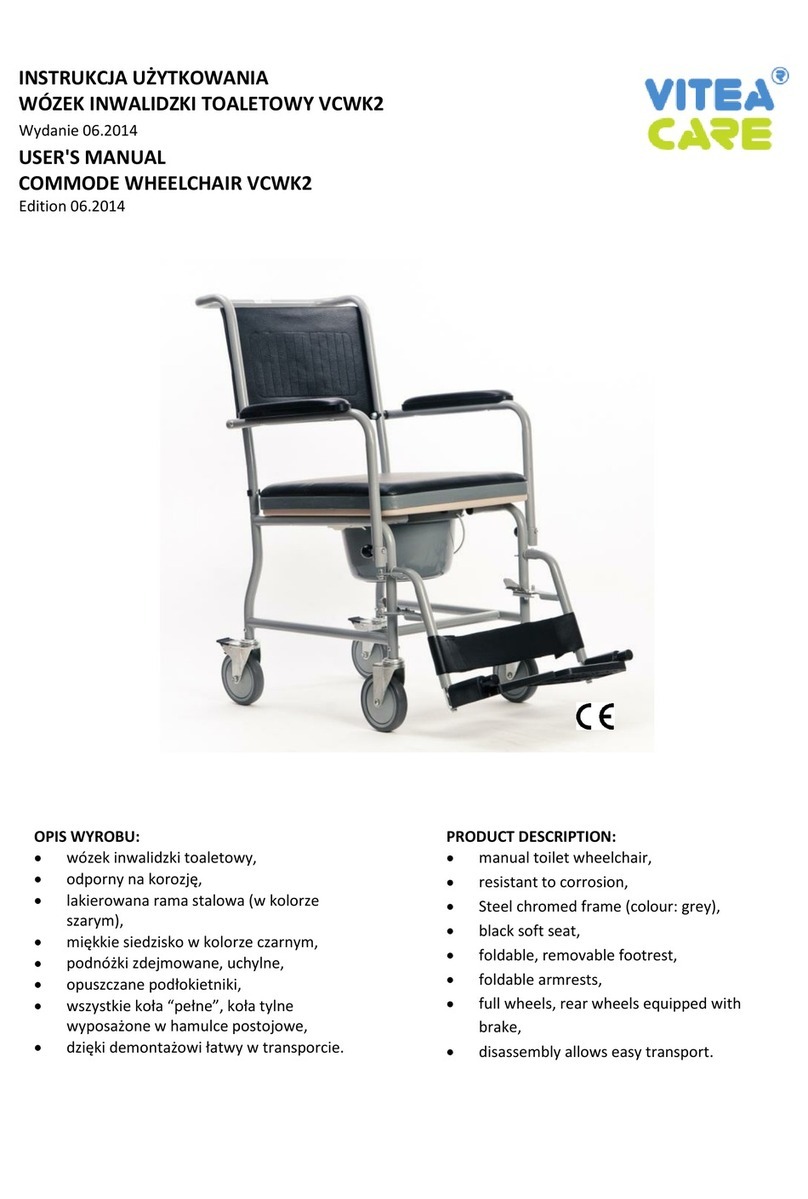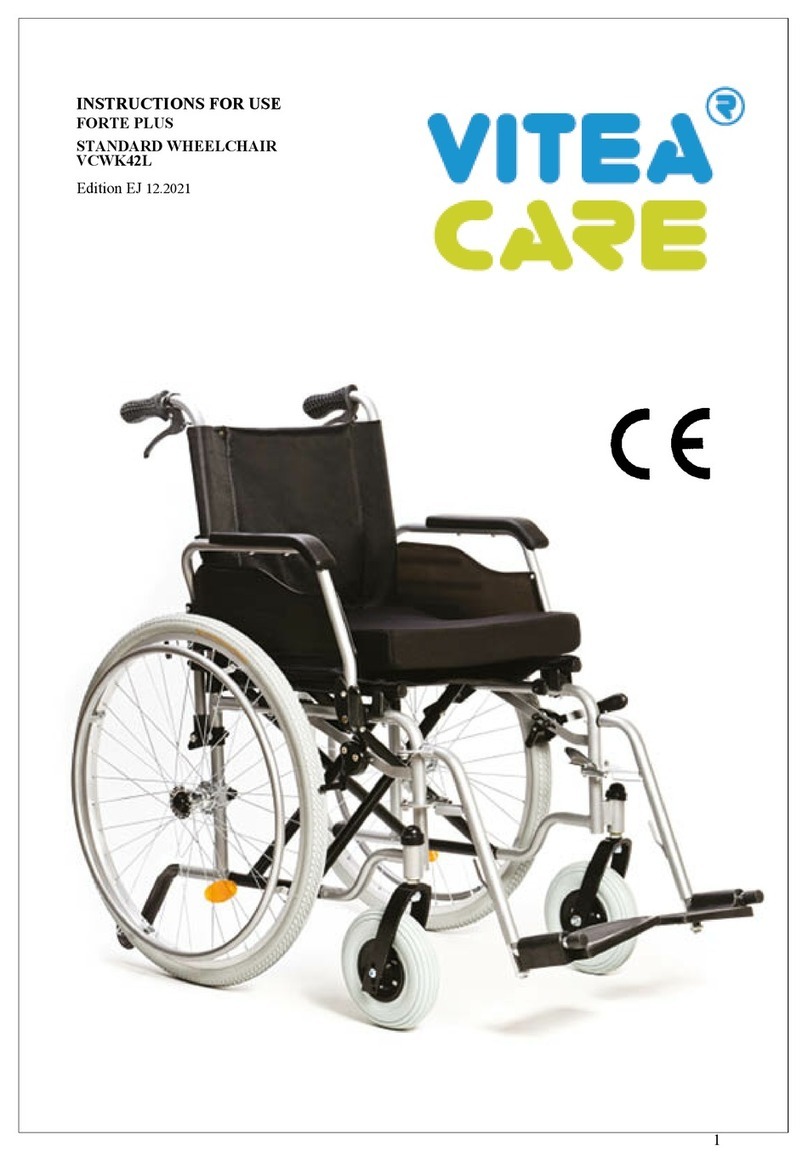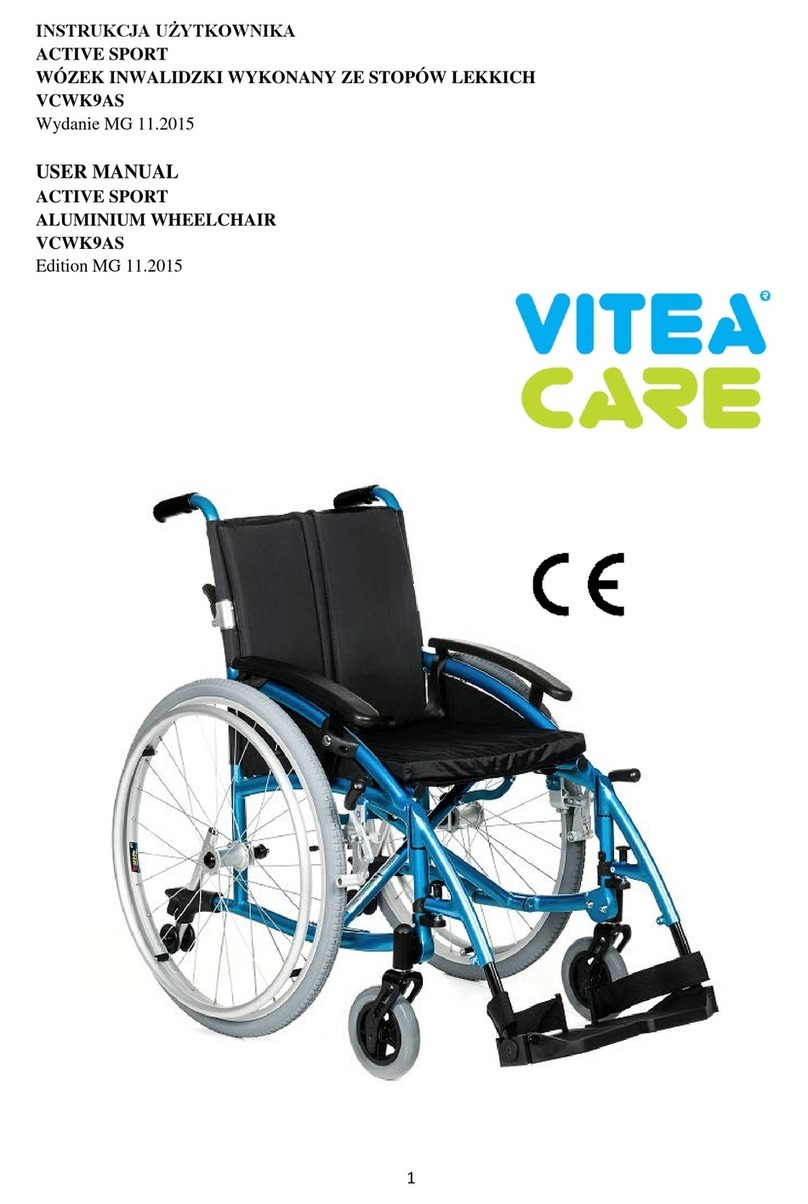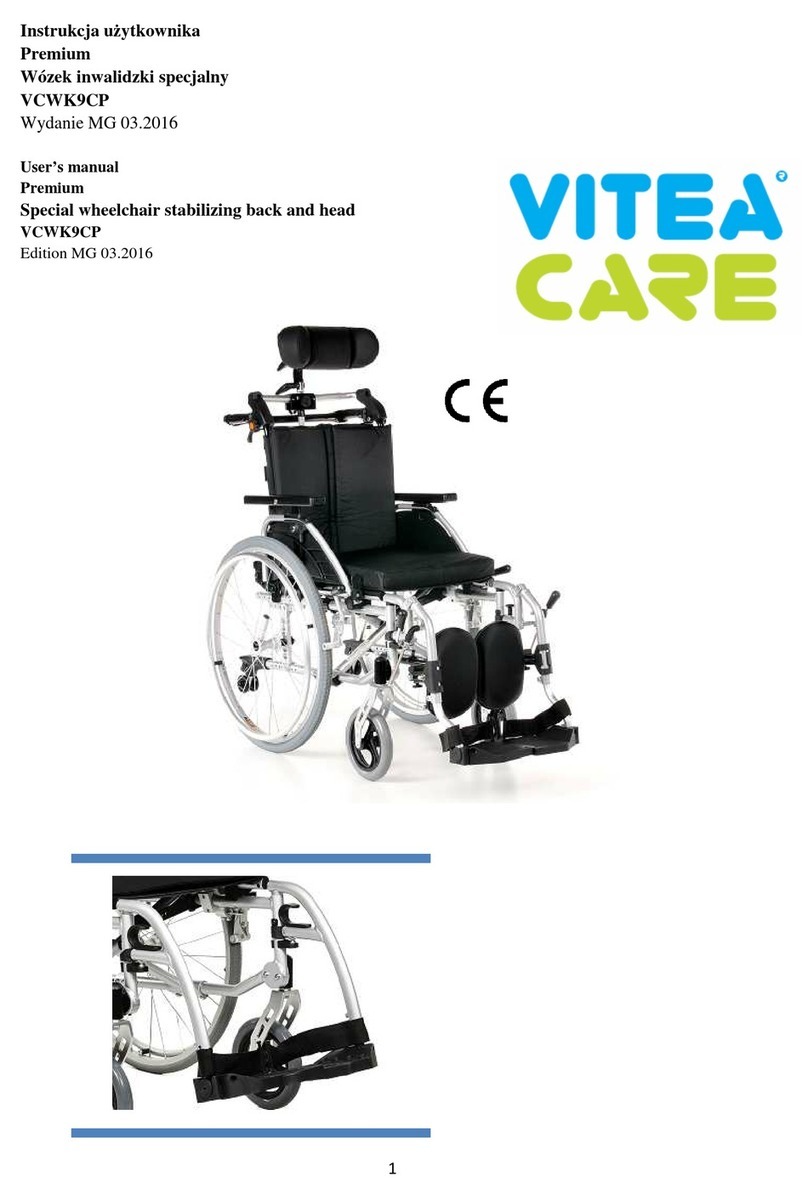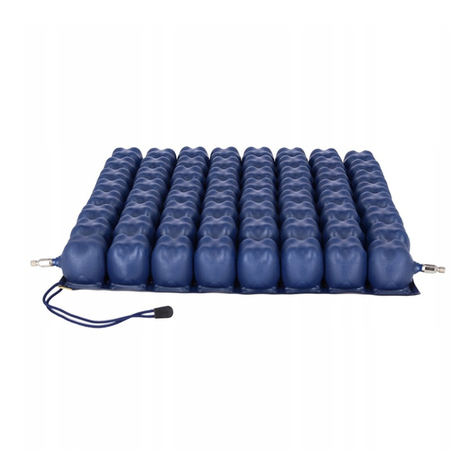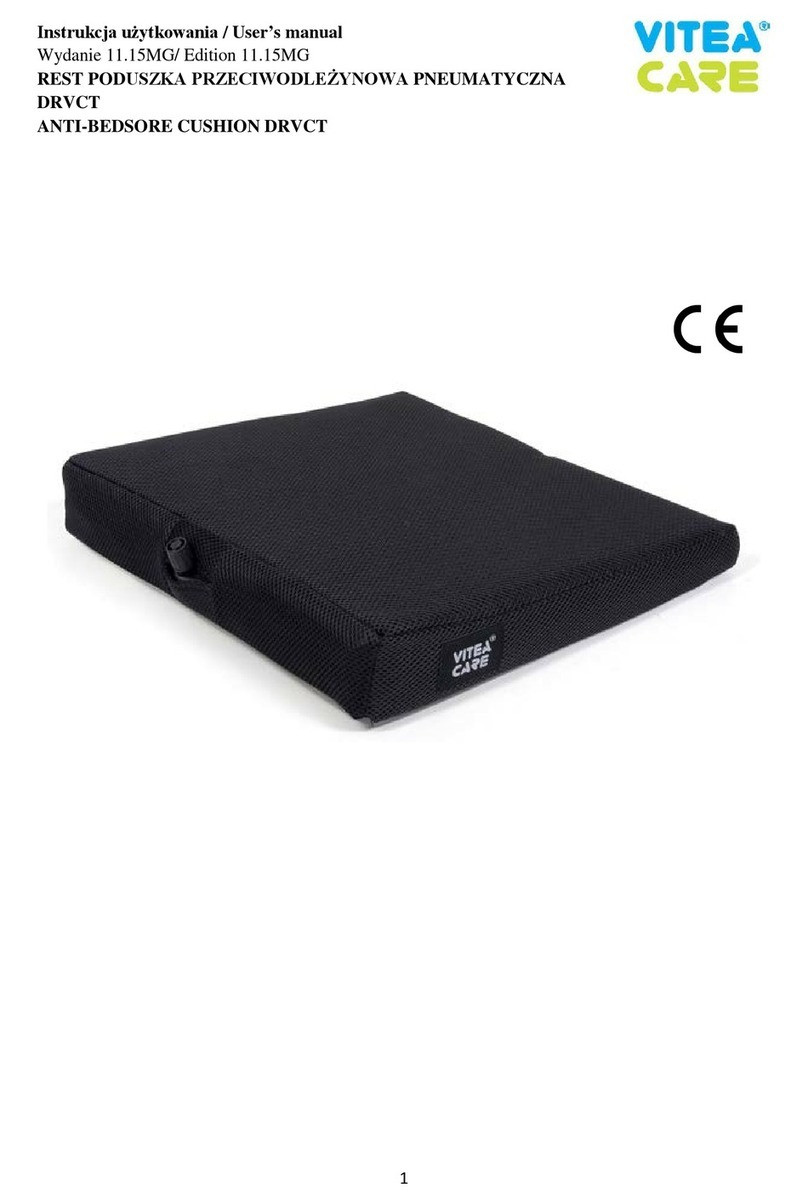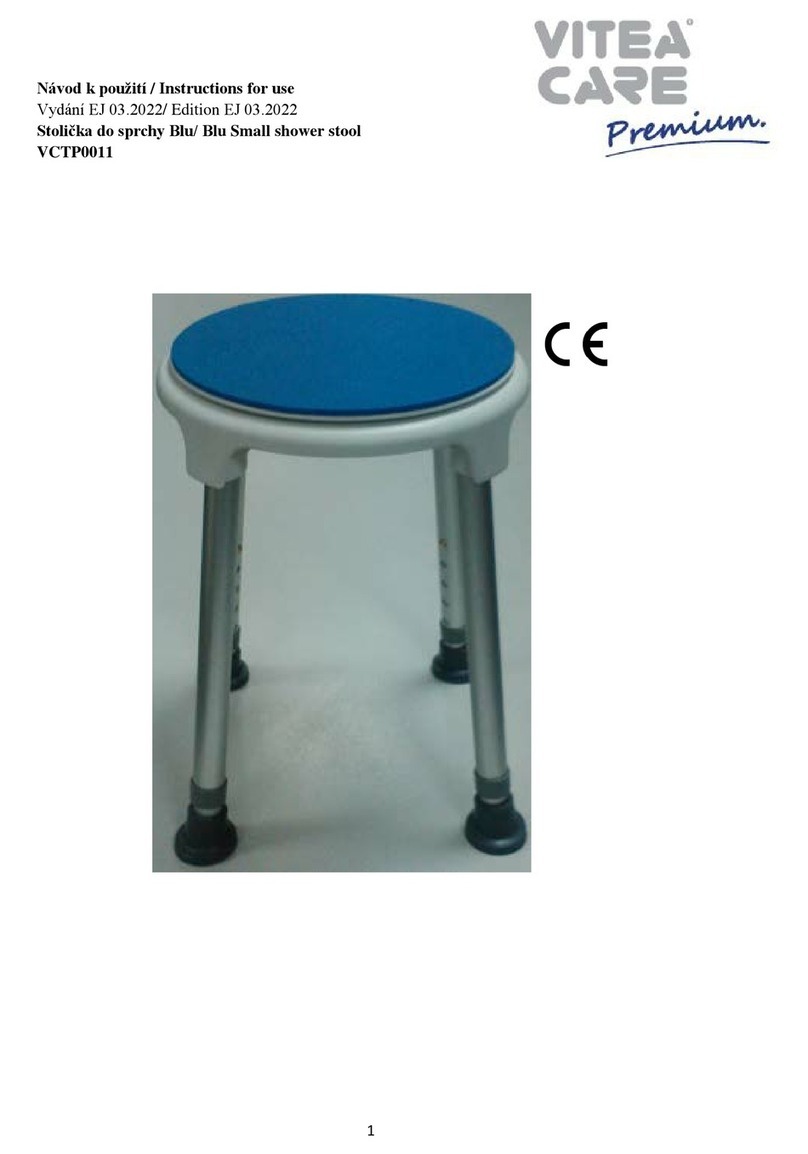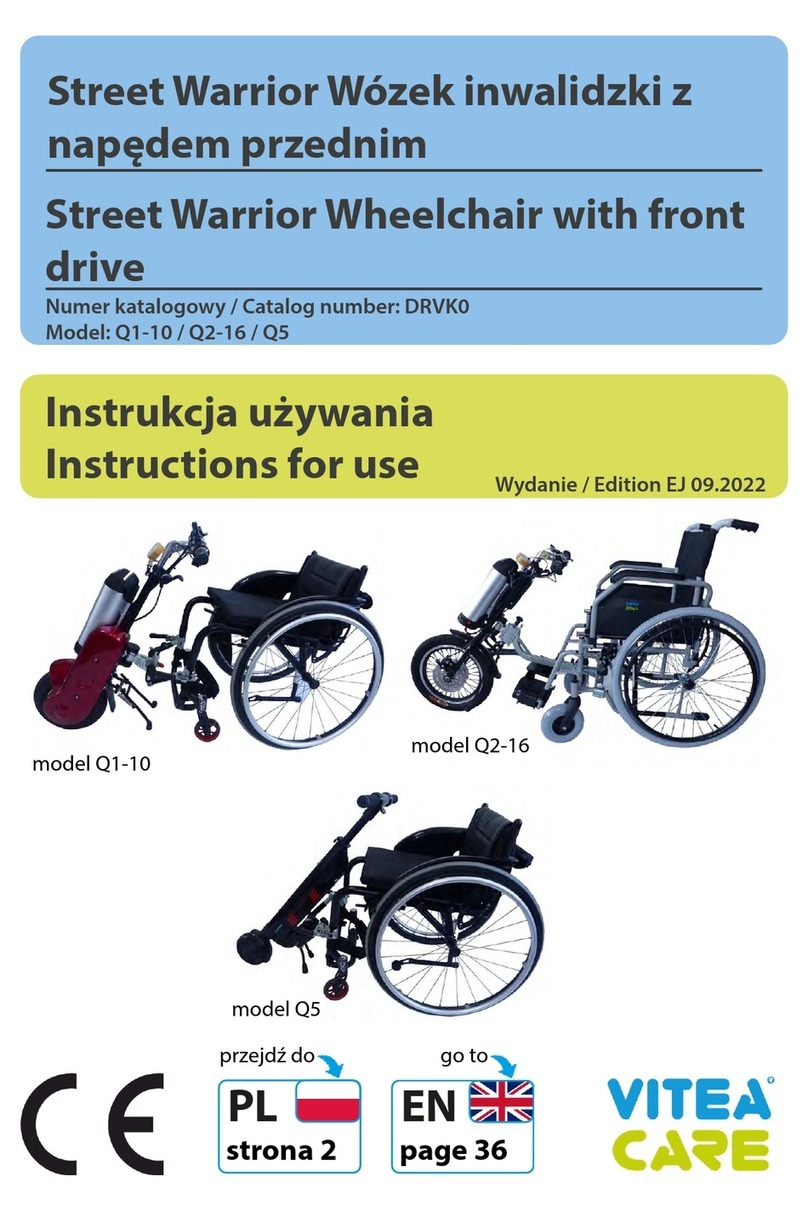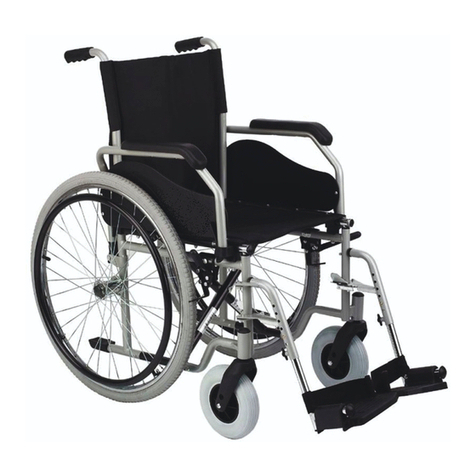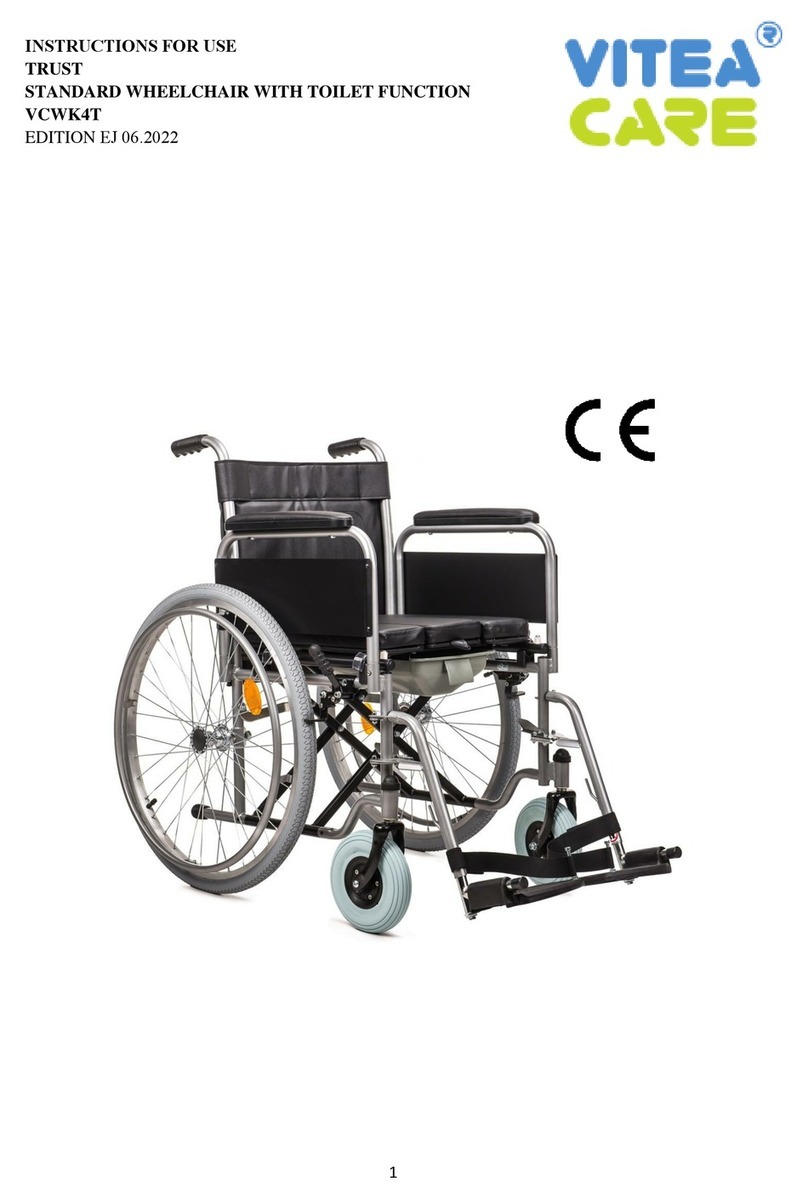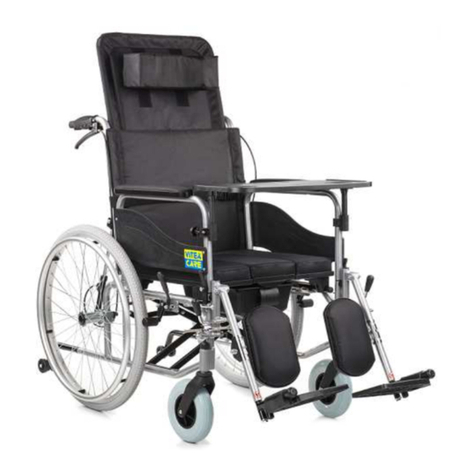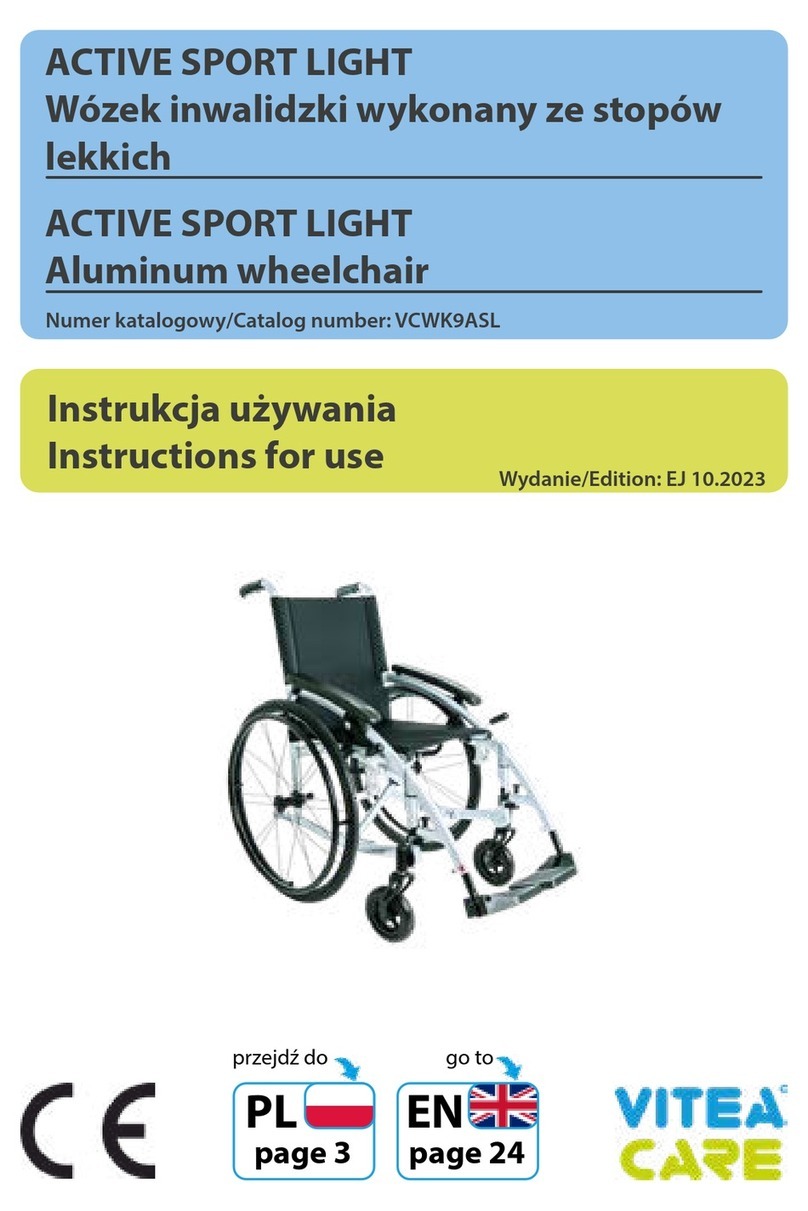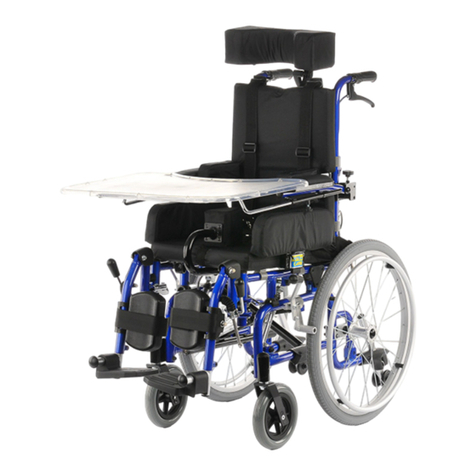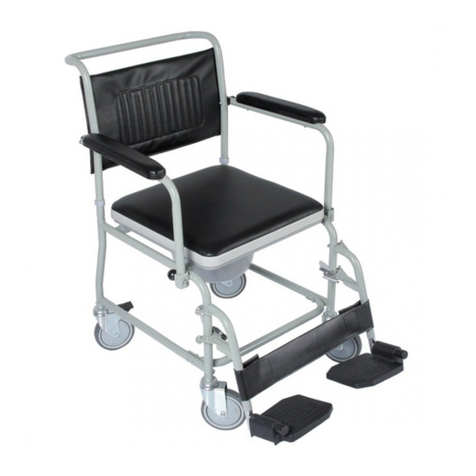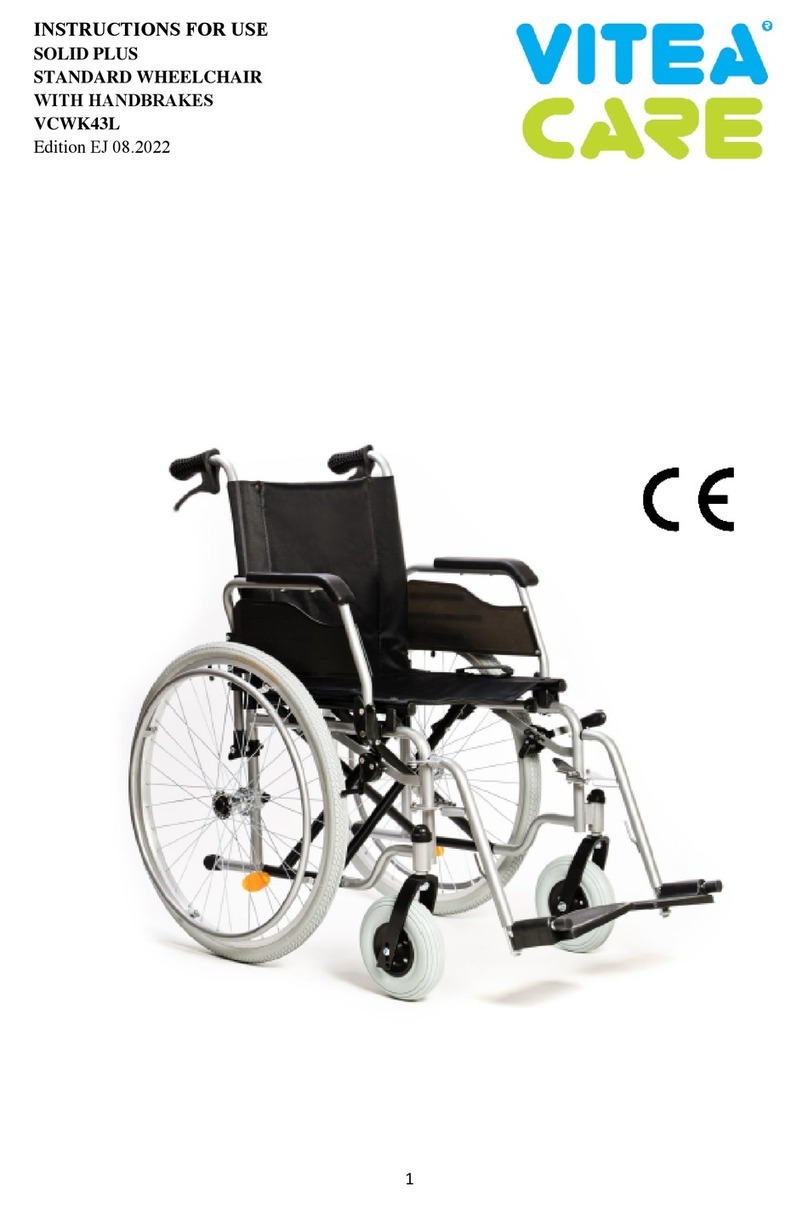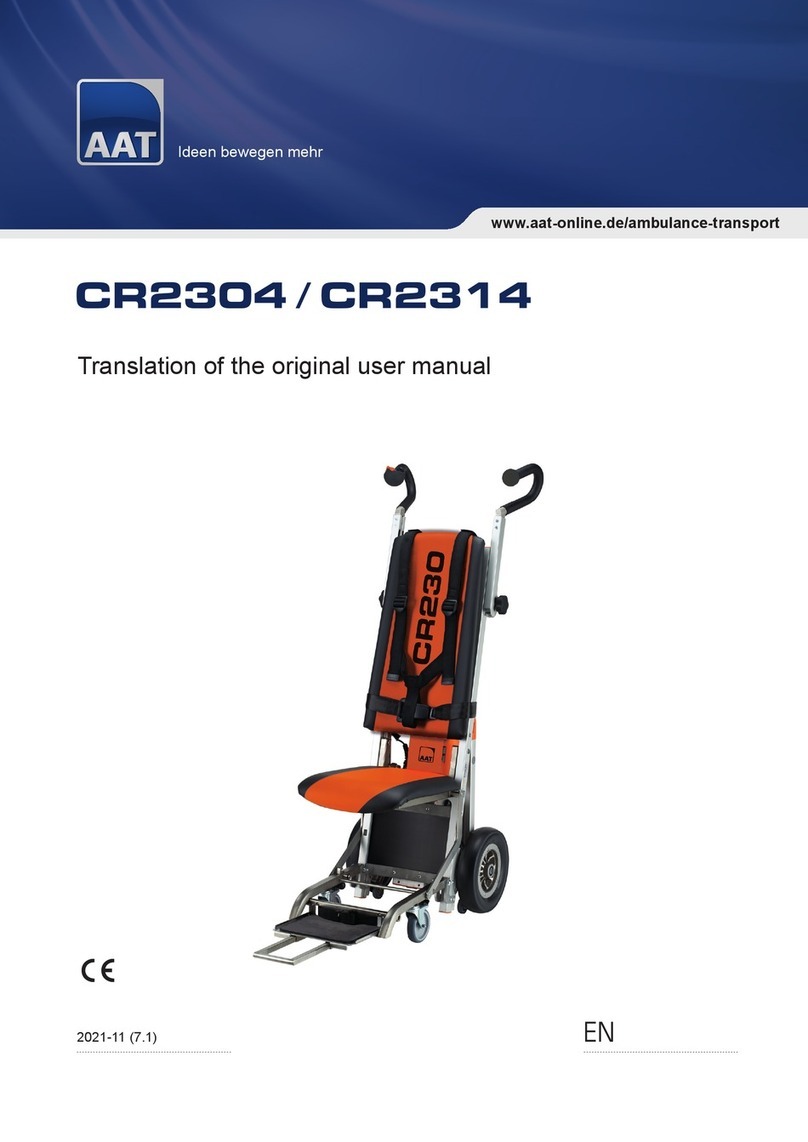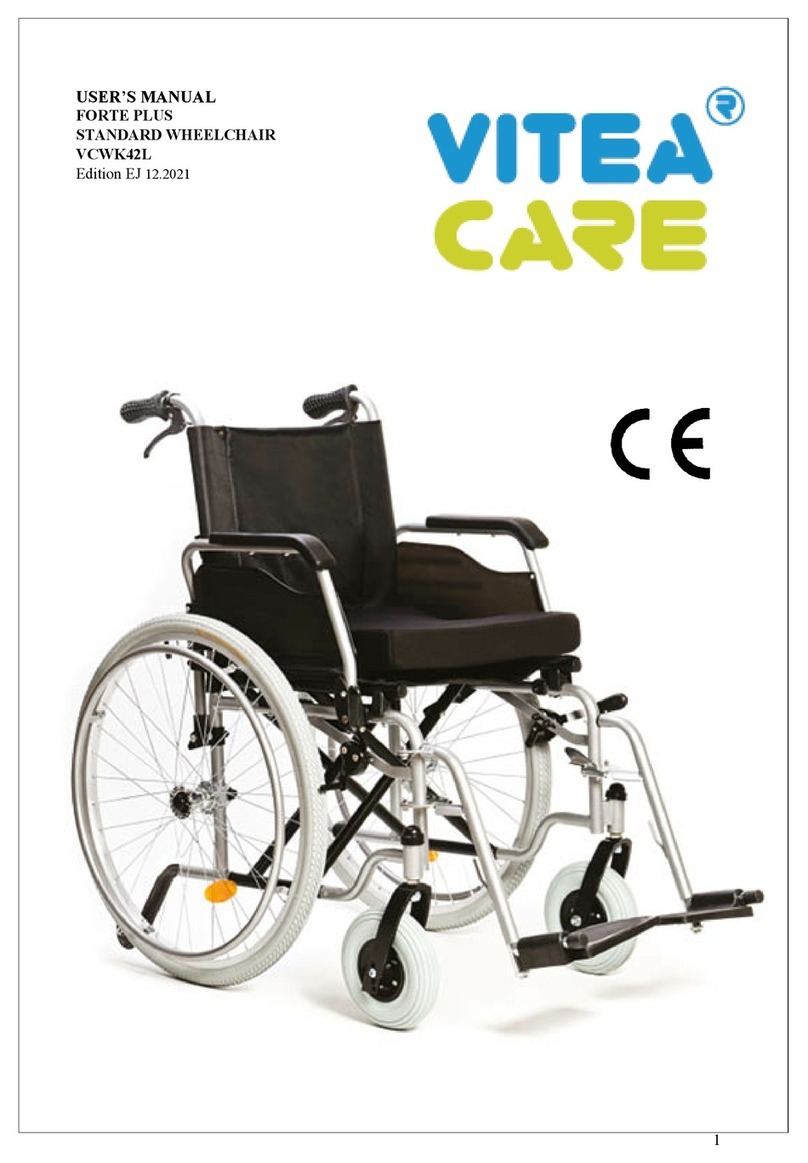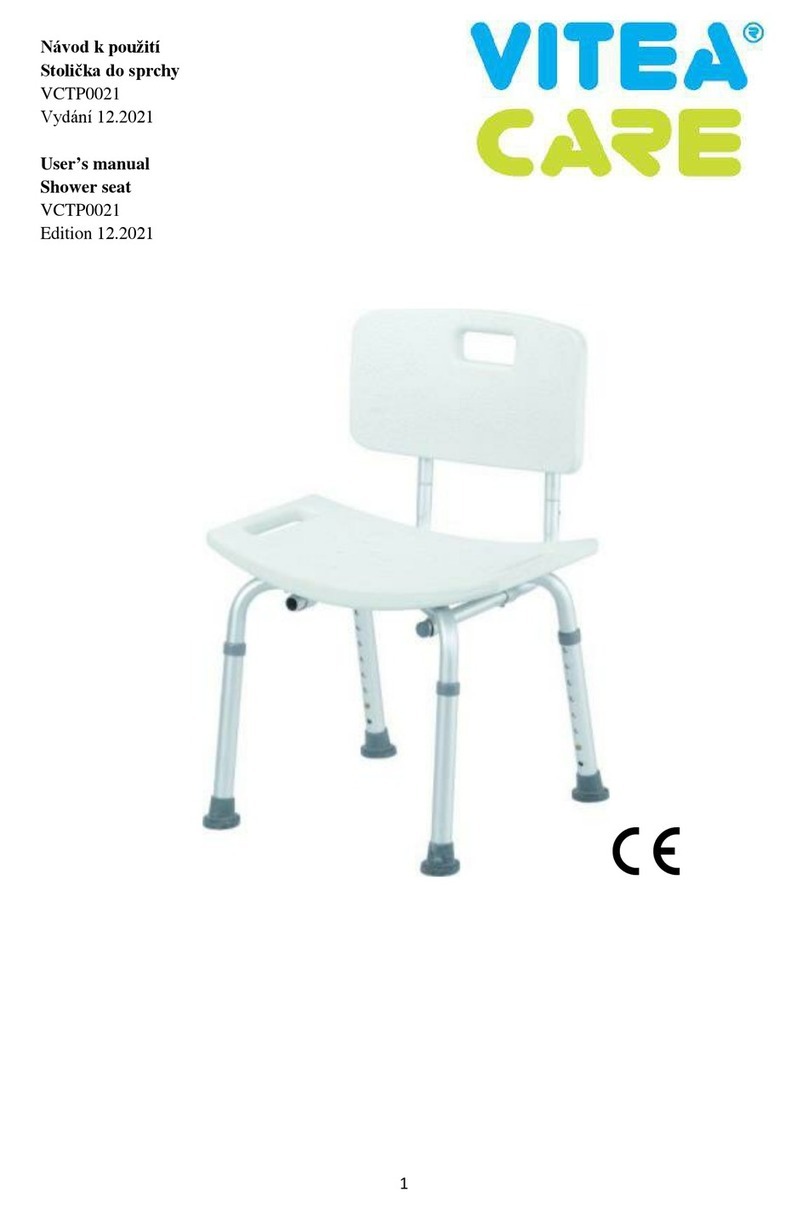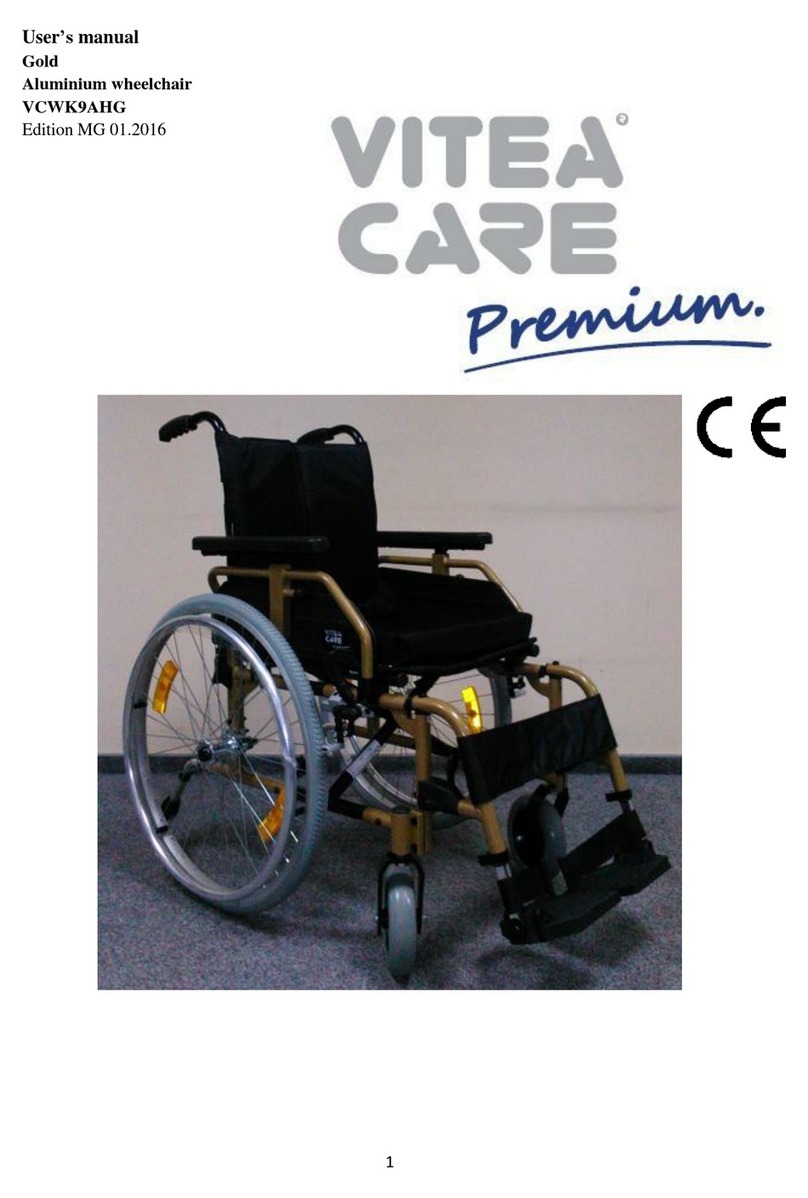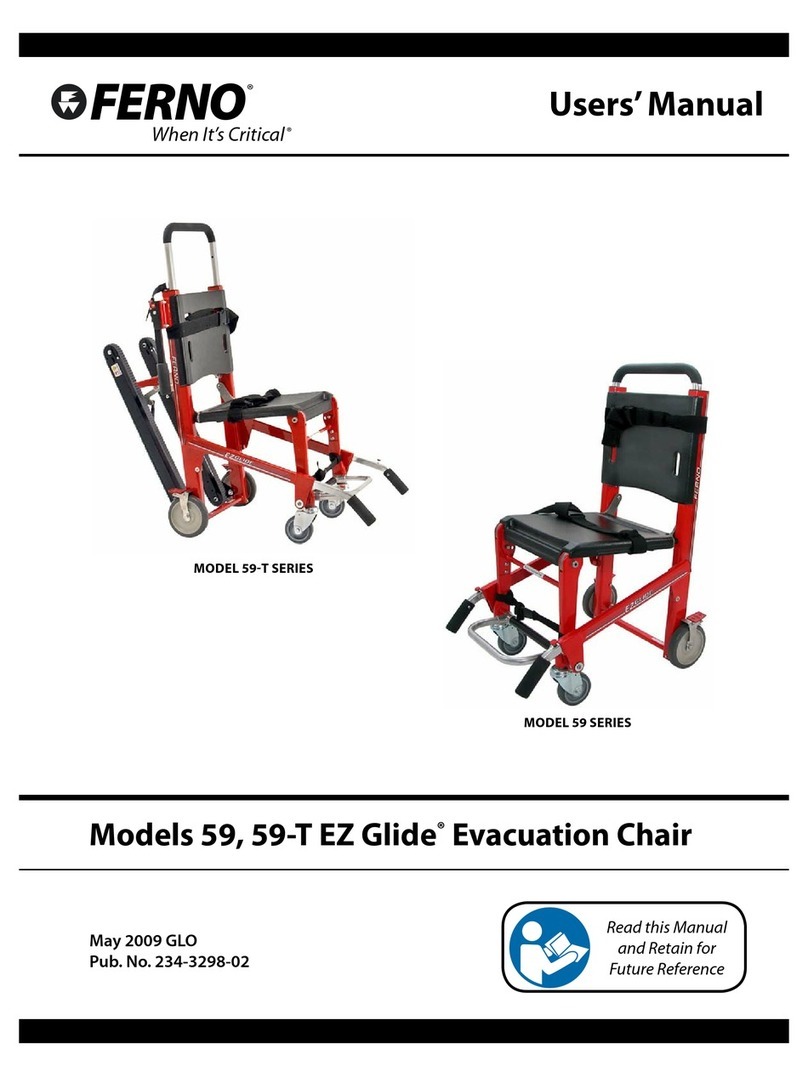korzystaniu z wózka, należy poprosić
opiekuna o pomoc przy pokonywaniu
przeszkód.
o) Nie pozostawiać wózka wraz z
użytkownikiem w bezpośrednim pobliżu
otwartego źródła ognia.
p) Należy pamiętać, że temperatura
powierzchniowa tapicerki i elementów
ramy może wzrosnąć po wystawieniu na
działanie słońca lub innego źródła ciepła,
natomiast w niskich temperaturach
zachodzi niebezpieczeństwo bardzo
dużego wychłodzenia części metalowych
wózka. To może być przyczyną
oparzenia lub odmrożenia części ciała.
q) Wózek należy przenosić chwytając za
konstrukcję ramy siedziska. Nigdy nie
należy przenosić wózka za podłokietniki
lub za podnóżki.
r) Wózek nie może być wykorzystywany
do użycia jako siedzisko w pojeździe
silnikowym (autobus, pociąg).
s) Wózek przeznaczony jest dla osób o
masie do 136 kg.
t) Wózek powinien zawsze dać się łatwo
składać i rozkładać. W przypadku
problemów ze złożeniem należy
ponownie zapoznać się z instrukcją, lub
skontaktować się z wytwórcą.
u) Poruszając się po powierzchniach
pochyłych należy zachować szczególną
ostrożność. Maksymalne dopuszczalne
kąty nachylenia podłoża w górę i w dół
wynoszą 5%.
v) Hamulce nie służą do spowalniania
wózka w trakcie ruchu, należy ich
używać wyłącznie aby nie dopuścić, do
niepożądanych ruchów wózka.
w) Oba hamulce powinny być właściwie
wyregulowane. Nieprawidłowe
ustawienie jednego z hamulców,
skutkujące zablokowaniem tylko jednego
koła tylnego, co na dużych
pochyłościach może być przyczyną
trudnego do opanowania obrócenia się
wózka wokół koła zahamowanego.
x) Należy regularnie kontrolować ciśnienie
w oponach. Przy zbyt niskim ciśnieniu w
q) In order to transfer wheelchair, grab the
frame. Never transfer the wheelchair by
grabbing the armrests or footrest.
r) Never use the wheelchair as a seat for the
transportation of people in cars, buses or
any motor vehicles.
s) The wheelchair is designed for people up
to 136 kg.
t) Wheelchair must be easy to fold and to
unfold. In case of problems with folding,
you should re-read the instruction or
contact the manufacturer.
u) Keep caution while moving on sloping
surfaces. The maximum allowable slope
angle up and down is 5%.
v) Brakes cannot be slow down the
wheelchair during ride, You should use
them only to prevent the unintended
movements.
w) Both brakes should be properly adjusted.
Incorrect setting one of the brakes,
results with blocking only one rear
wheel. On large slopes, it can cause
difficulty to control the rotation the
wheelchair around the wheel stopped.
x) Regularly check the tire pressure. With
too low tire pressure than recommended,
the brake performance can be
significantly reduced!
y) While reaching objects, avoid excessive
leaning out the wheelchair because it can
cause a fall (to the side, front, back).
z) In order to avoid accidental rolling off
the wheelchair, always put on the brakes
when the stroller is stopped, when patient
get in, get off, while changing the
position.
aa) Do not leave the patient in the
wheelchair (even with turned on both
brakes) on the descents, ramps, landings,
etc.
bb) It is necessary to check after each wheel
mount if wheel axle connector lock
works properly. While mounting should
hear “click” of the latch. Pull strongly
the wheel to check if it is installed
correctly.
cc) Using the parking brake while driving




















